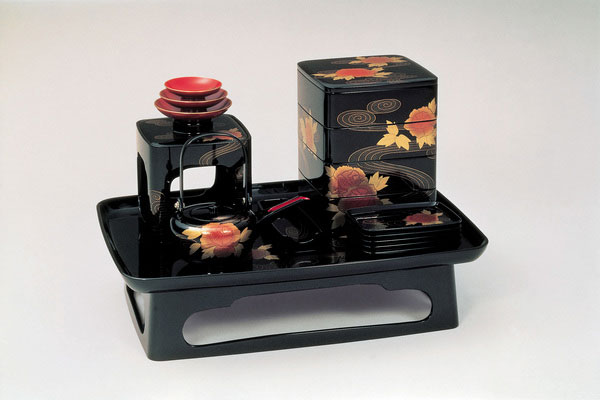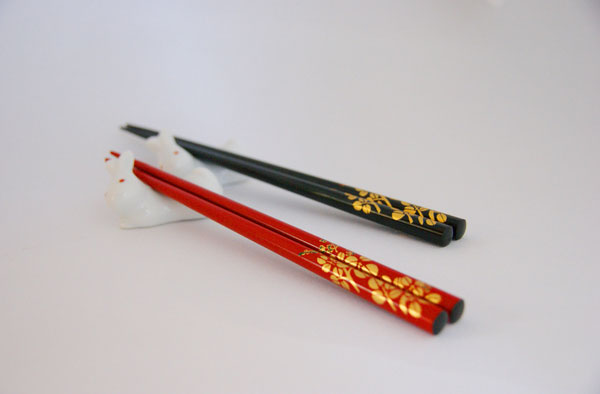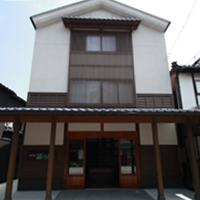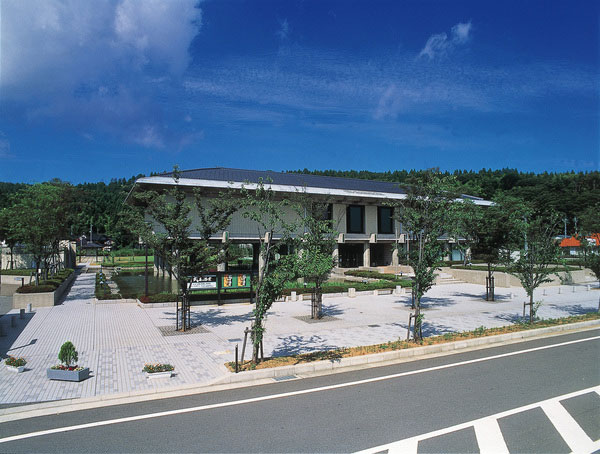 Photo:Ishikawa Prefecture Tourism League
Photo:Ishikawa Prefecture Tourism League
- Lacquerware
- Ishikawa
Wajima lacquerware Wajima nuri
More than 100 production steps are needed
to create a luminous and durable lacquerware masterpiece
Description
What is Wajima lacquerware ?
Wajima lacquerware (called Wajima nuri in Japanese) is made in the city of Wajima, Ishikawa prefecture. The most notable features of Wajima lacquerware are not only its beautiful finish but also the high quality powder used for its production called jinoko (powdered diatomaceous soil), which can be found only in Wajima. Because of the use of jinoko as an undercoat, the lacquerware's high durability is ensured. Wajima lacquerware uses decorating techniques like filling carved areas with gold or using gold or silver dust to create maki-e. These graceful gold and silver designs are eye-catching. It is a durable product that goes through over a hundred stages of production. Therefore it is not only an appealing product with durability but it is also restorable if damaged.
History

The origin of Wajima lacquerware is said to either have been taught by a priest of Negoroji (a complex of Buddhist temples located in the city of Iwade, Wakayama prefecture) during the Muromachi period (1336-1573) or by a priest of Negoroji who ran away from a wartime fire set by Hideyoshi TOYOTOMI (1537-1598) during the Sengoku period (1467-1603). However, nobody knows the exact origin of Wajima lacquerware, even to this day. The common point of all the different theories is that Wajima lacquerware derived from Nego lacquerware, a lacquerware for daily use. Another possible theory is that daily-use lacquerware developed and then transformed into the current form of Wajima lacquerware. It was around 1630 during the early Edo period (1603-1868) that a form close to the present Wajima lacquerware was established. Moreover, the production process became remarkably similar to the current one between 1716 to 1736. Nowadays, Wajima lacquerware is considered to be an elegant and slightly upscale product but it actually had a different reputation before the Showa period (1926-1989). It was commonly used as a household lacquerware for important ceremonial occasions because it is solid and sturdy. However, due to changes made to the style of ceremonies and its registration as a traditional craft in 1975 by the Japanese government, it has developed more artistic connotations.
Production Process
- 1. Wooden base This process starts from forming the wooden base before applying lacquer. Wood from either Japanese zelkova trees or Japanese cherry birch trees is used as material for Wajima lacquerware. They are cut and left to sit for two to three years until they are throughly dried. The timber is then carved into a rough shape after examining the quality of the wood. Wajima lacquerware is not carved straight after the rough carving. Instead the sawdust is burned and the roughly shaped piece gets smoke dried and is left to season for a few months to a year. Once fully dry, the roughly carved wood piece will be trimmed down using a wood plane or a lathe. The trimming is done from rough carving, outer carving, inner carving, and base finishing, little by little to the details.
- 2. Undercoating The next process is to apply the undercoat. Wajima lacquerware uses a unique material called jinoko to make a special undercoat. First, a carving called kirebori is done. When the wood is shaved and there is a crack, it can easily be damaged from the crack. The lacquerware is reinforced by carving the crevice slightly and applying the undercoat. This is the kirebori technique. More delicate parts are reinforced using a technique called kisemono kezuri which is done by pasting cloth. Because the artisans pay particular attention to cracks and fragile parts while applying layers of undercoat, Wajima lacquerware becomes a durable lacquerware. After completing the reinforcement of the fragile parts, a mixture of raw lacquer and polishing powder is applied to the entire piece. Then the piece is left to dry before being shaped with a whetstone. Once the final shape is completed, the piece is ready for polishing on a lathe with water and a whetstone. This process helps to prepare the surface for finishing coatings of lacquer.
- 3. Final coating The final coating is the process of applying the lacquer evenly on the undercoating. The lacquer is made by making small, parallel cuts in the trunk of lacquer trees and collecting the sap using a special bowl called urushi zutsu. The sap can be collected only from June to October and in limited amounts of about 200g per tree. Therefore, lacquer is sometimes collected from hundreds of trees in a day. Because the chance to get sap for the lacquer is limited, this process is done at the same time that the wood is prepared and the undercoating is made. Then, the collected sap is first passed through a small filter to remove bark residues and other invisible contaminants. Then it is put through a centrifugal separator in order to remove any remaining impurities and obtain the raw lacquer. Wajima lacquerware does not use raw lacquer as it can be damaged easily and the color fades in a few years. Instead, the raw lacquer gets heated up and stirred until it turns into a form called nayashi. This step helps the color of the lacquer last for hundreds of years. The final coating is applied in a special room at an optimum temperature and humidity. This is to keep dust down since any dust or particle floating in the air must be avoided while working on the coating. Although the pieces looks simple, they require much attention and high craftsmanship so it is a painstaking work. If a piece is meant to be a solid color, this is the last step.
- 4. Decoration The polishing method called roiro happens after the final coating. The lacquerware is carefully polished with a fine abrasive to avoid any scratch marks. After the polishing, decorations are applied. The two main techniques used to decorate Wajima lacquerware are chinkin, a form of carving filled with gold or silver, and maki-e, the application of gold or silver powders onto a design. With the application of these two designs that make Wajima lacquerware even more elegant, the lacquerware is complete.
Representative Manufacturers
Tohachiya atelier

We strive to create a trust relationship with each of our clients, accompanying them from the creation of the products to the assistance and coordination after purchase. We welcome individual customers too and accept orders from at least 1 item.
-
Founded1912
-
ClosedNot Fixed
-
DirectorMasahide SHIOJI
-
Business Hours9am to 5pm
-
Address
-
Website
-
Tel.+81-768-22-0770
Facility Information
Wajima Museum of Lacquer Art
 Photo:Ishikawa Prefecture Tourism League
Photo:Ishikawa Prefecture Tourism League
-
Address
-
Tel.+81-768-22-9788
-
ClosedAround the New Year
-
Business Hours9am to 5pm
-
Website
Related Artists
- You will be redirected to the artist's page on the Gallery Japan website
- Kunie Komori (Living National Treasure)
- Fumio Mae (Living National Treasure)
- Kazuo Yamagishi (Living National Treasure)
- Masaki Hosotani
- Ogyo Ichishima
- Kota Mizushiri
- Satomi Mizushiri
- Seiho Mizushiri
- Soichiro Nakamuro
- Katsuhiro Nishi
- Yuji Okado
- Keiji Onihira
- Yasunori Sakamoto
- Yasushi Shimizu
- Junji Shioda
- Toyoshi Suzutani
- Yoshimitsu Tanaka
- Shota Teranishi
- Katsuhiko Urade
Other Lacquerware
- Wajima lacquerware
- Kamakura-bori lacquerware
- Tsugaru lacquerware
- Aizu lacquerware
- Yamanaka lacquerware
- Kawatsura lacquerware
- Echizen lacquerware
- Joboji lacquerware
- Kiso lacquerware
- Hidehira lacquerware
- Kagawa lacquerware
- Ryukyu lacquerware
- Takaoka lacquerware
- Wakasa lacquerware
- Hida-shunkei lacquerware
- Ouchi lacquerware
- Kanazawa lacquerware
- Kishu lacquerware
- Kyo laquerware
- Odawara lacquerware
- Naruko lacquerware
- Niigata lacquerware
- Murakami carved lacquerware































































































































































































































































































